The color of the wings is more about the identity of each bug species. They can drive predators away or lure in potential mates.
Clear wings have similar defense-orientated purposes. They help various species remain undetected by common predators such as robins.
Termites have clear wings and still prefer to fly at night when they are even less likely to be spotted by predators.
Other species such as butterflies have clear wings to escape predators as they live in areas with multiple predatory species.
Many other species of bugs with clear wings are exceptions when compared to other bugs and insects as most have colored wings.
Some of the most common species found in North America and around the world can be categorized as follows.
Table of Contents
1. Termites
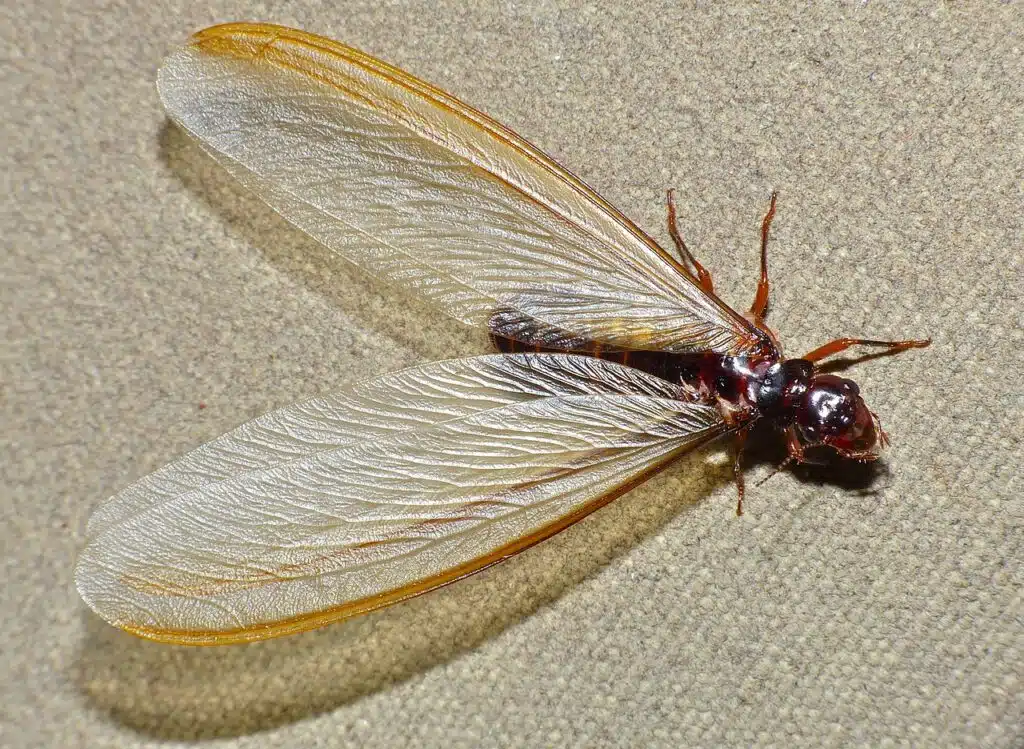
Termites are some of the most damaging bugs with clear wings through impact on structural wood.
Only a few types of termites can fly. The entire relationship of termites with wings is different from other species.
Flying termites only fly while mating, typically in groups.
Their flying capacity is reduced as they can only cover short distances before having to land. This is also the time termites lose their wings, as they’re only meant for short flights.
As ants, termites are spread into different casts. Alates are the cast of termites that can fly.
They swarm during the mating season. Their transparent wings are longer than the body.
While longer, these wings are not strong enough to survive on termites after their reach their destination.
Flying termites can perform only one flight before losing their wings.
The highest chance of seeing flying termites is spring time, typically after rain when the air humidity is high, a habitat characteristic termites like.
2. Cicadas
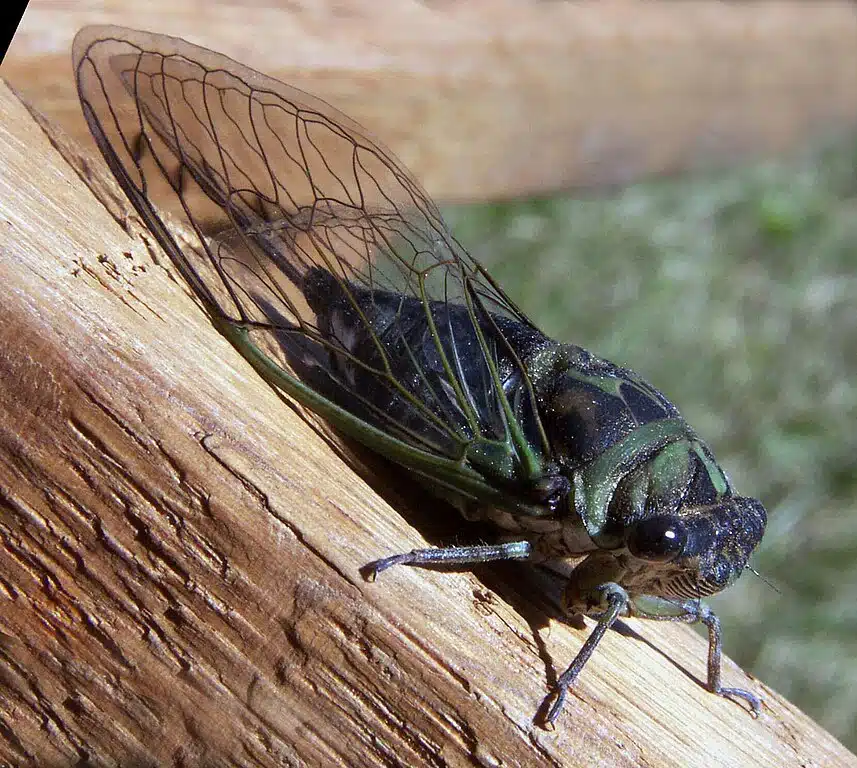
Over a few thousand species of cicadas are seen around the world.
Many cicadas have transparent wings. This is a defense mechanism as they keep these wings close to the body to avoid being spotted by predators.
In turn, other cicadas have transparent wings and colorful bodies which would make predators perceive them as toxic.
Young cicadas are known to feed on tree sap while adults feed on plant sap.
North America is home to many types of cicadas with transparent wings, such as those of the Magicicada family.
These cicadas only appear in intervals between 13 and 17 years and are popularly known as periodical cicadas due to their rare emergence.
3. Ants
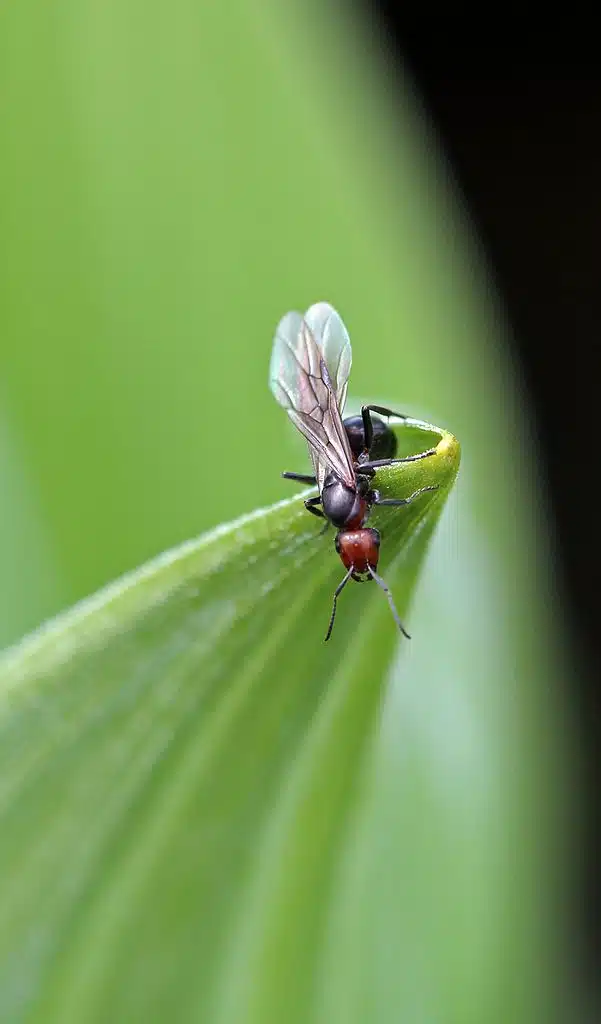
Similar to termites, ants have a complex relationship with wings. Only a few casts of a few species of ants have wings.
Even ants with wings eventually lose them.
As termites, ants have wings in the spring, particularly for mating. This is why it’s mostly male ants and queen ants that are known to fly.
Typically flying at night to avoid predators, ants mate in flight.
As they mate and find a good place to nest, ants also lose their wings, as mated termites.
Carpenter ants are known to have a class of winged alates, most active in the mating season.
4. Bees
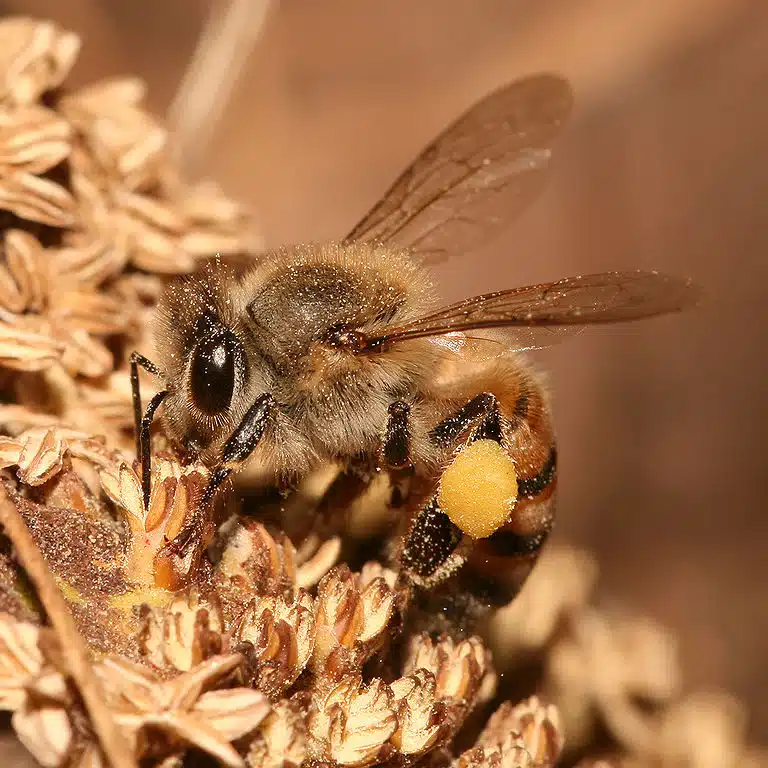
There are thousands of bees around the world. Some have black wings, others have smoky brown wings, and a good number of species have transparent wings.
Some of the most appreciated bee species such as the Western Honey Bees have transparent wings.
Both the forewings and the hindwings of Western Honey Bees are transparent.
These bees are among the most common domesticated bees, kept and looked after for their high production of honey.
These bees use their wings in different ways, many unknown to people. For example, they flap their wings inside the hive to create a draft that dries collected nectar.
5. Wasps
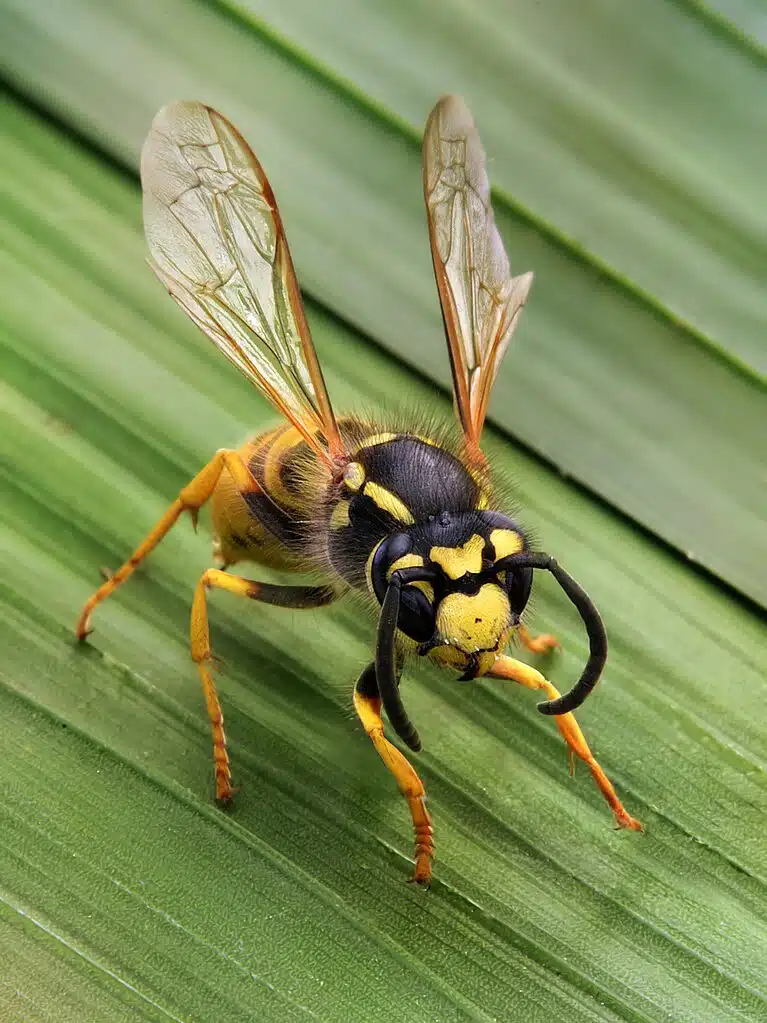
Sometimes similar to bees, wasps are among the most common insects with transparent wings.
While some species are known to have black wings, transparent wings are highly common on common wasps.
Common Wasps (Vespula vulgaris) are some of the most widespread wasps in North America.
This species has transparent wings which are used in many other ways outside their main flying purpose.
For example, Common Wasps flap their wings vividly while bending their abdomen whenever they signal a potential nest intruder.
They can also synchronize wing fanning to cool down the wasp nest on very hot summer days.
Queen Common Wasps use their wings to dance around a specific site suitable for building a nest. This is believed to be a ritual that helps the queen memorize the location better.
6. Flies
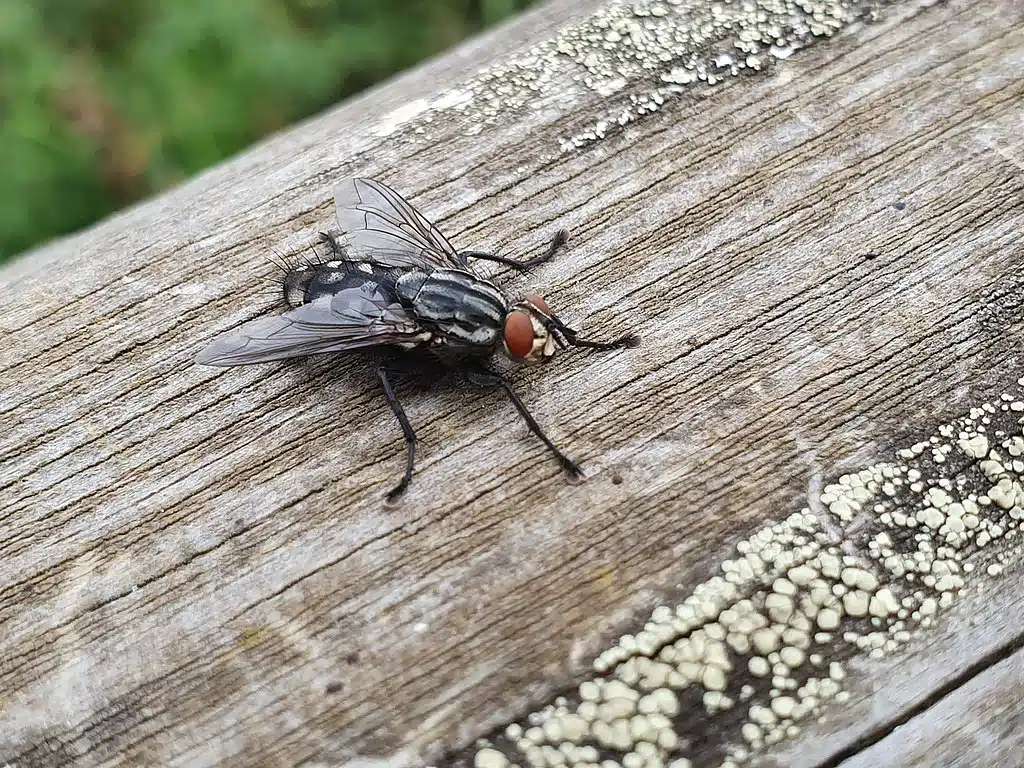
Flies are often seen with transparent wings. A high number of flies is known today, most of which have transparent or almost transparent wings.
Most people encounter houseflies (Musca domestica) in their homes. These insects with transparent wings feed on decaying organic matter and food left out in the open around the house.
While legless and white at first, these flies grow into black, legged, and winged flies that can be a vector for spreading diseases.
Unlike termites, houseflies may fly over distances of a few miles.
They stop to feed in all types of areas with decaying food and feces, which means they can transmit bacteria and viruses when later landing on food.
7. Green Lacewings
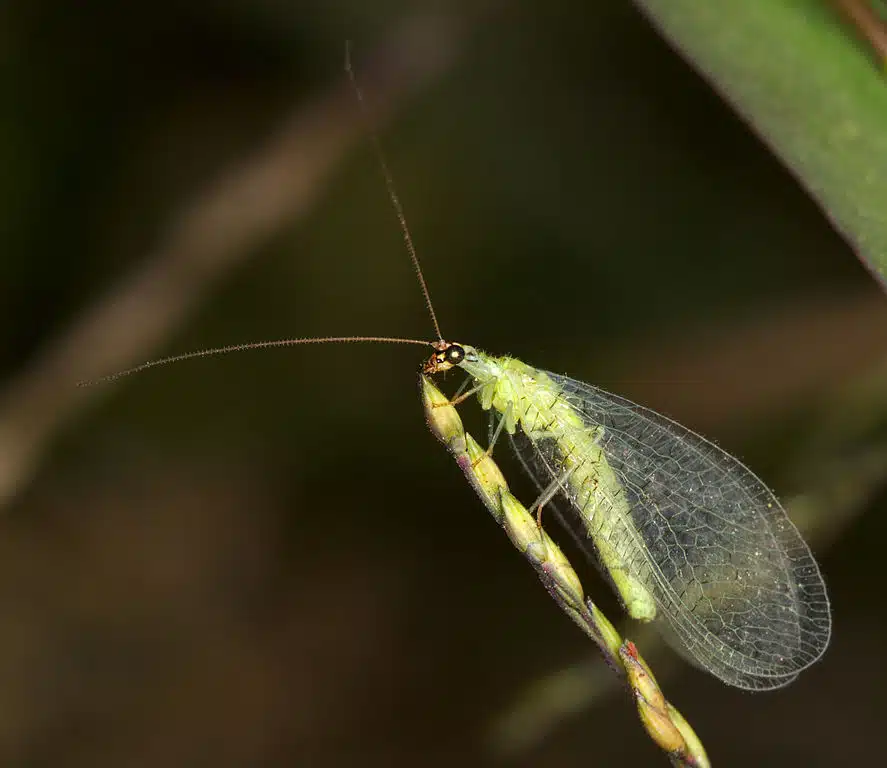
Green Lacewings are some of the largest bugs with clear wings.
The wingspan varies according to the species. Lacewings have varying wingspans between 6 and 65mm.
Some of the largest species of lacewings live in tropical climates.
Their wings are mostly transparent, but their veins are still visible. Black and green veins are common on the wings of these flies.
Iridescence is also seen on these wings. In direct sunlight, many species of lacewings with transparent wings show a green or brown hue.
Apart from having transparent wings, green lacewings are highly appreciated on crops, where they control many types of pests.
Mites and aphids are often eaten by these insects.
8. Mayflies
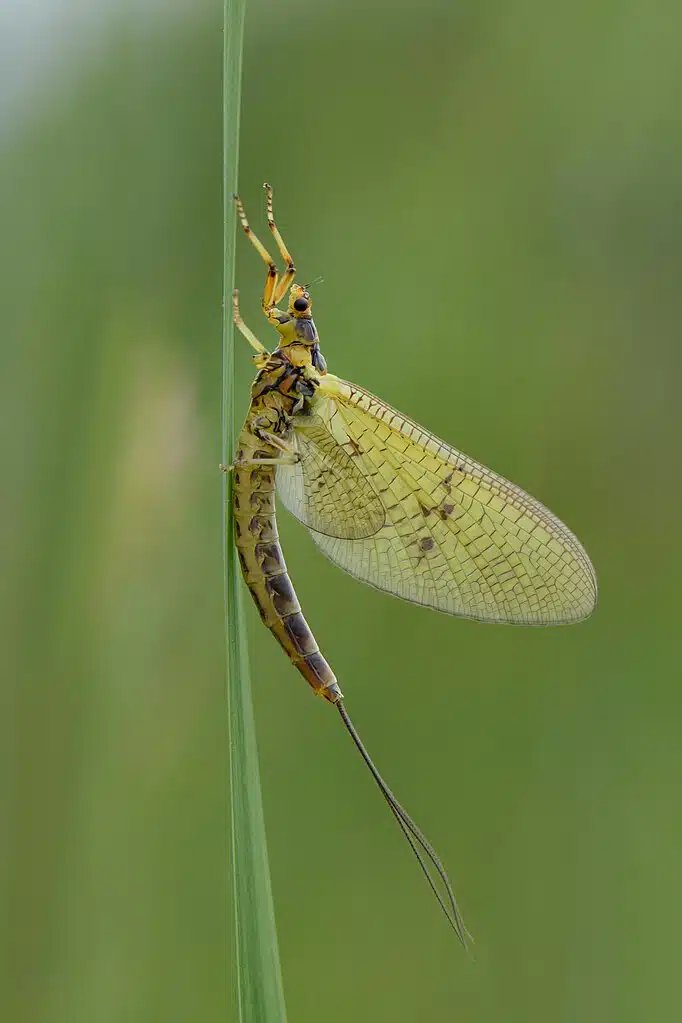
Mayflies are some of the oldest types of insects in the world.
They have a unique look with an elongated body and long wings that don’t fold over the body.
Many species of mayflies have transparent wings.
Sepia Dun (Leptophlebia marginata) is native to North America and Europe.
They have long transparent wings and live close to water.
Nymphs are aquatic and only emerge out of the water when turning adults and when they grow wings.
Found around streams and other slow-moving waters, these prehistoric-looking insects are an indication of water cleanliness.
Sepia Duns and most other types of mayflies only live in unpolluted clean waters.
The best time to see these flies is during the day when males fly in groups, looking for prospective mates.
9. Moths
Moths are some of the most elusive species with clear wings.
Almost all types of moths with clear wings have visible contrasting black veins and possibly colorful margins.
These types of moths are difficult to spot or might even look confusing to their predators.
- Hummingbird Clearwing (Hemaris thysbe)
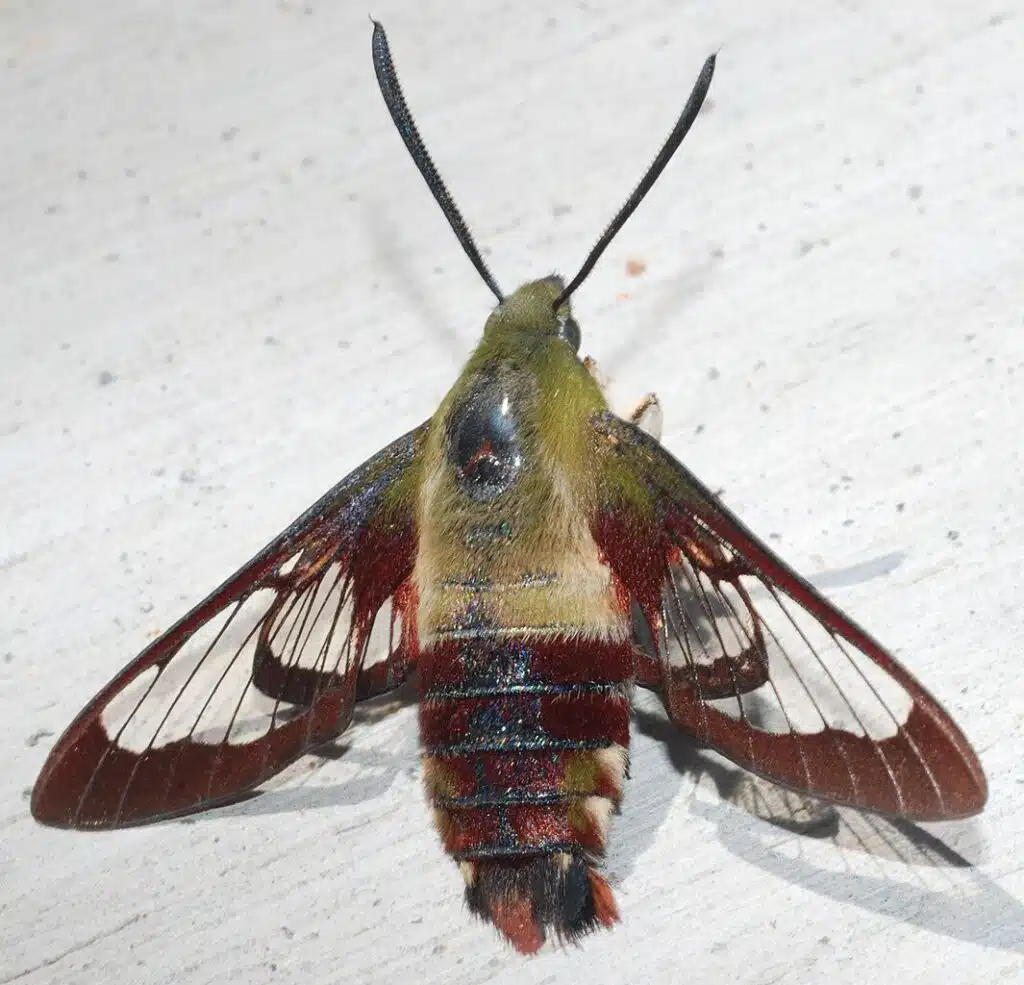
This moth species are known to mimic mockingbirds. It has clear wings with visible veins and contrasting red margins.
Native to Eastern parts of North America, Hummingbird Clearwing moths may be spotted feeding on plant nectar.
- Snowberry Clearwing (Hemaris diffinis)
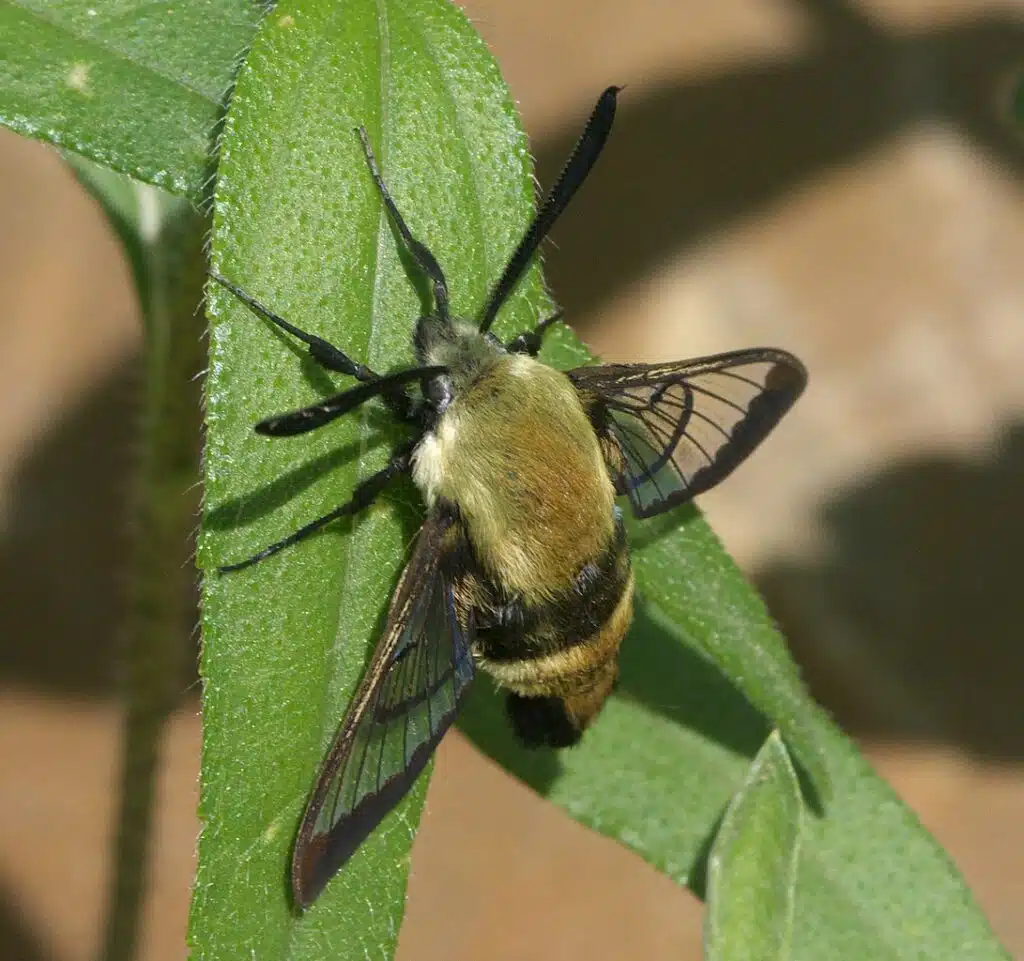
Snowberry Clearwing moths are named after their most common caterpillar hosts, snowberry and honeysuckles.
These types of moths feed on lantana and they might be spotted hovering around these plants in the summer.
Clear wings with gray to brown margins are specific to Snowberry Clearwings.
10. Butterflies
As moths, butterflies also come with clear wings, even if to a lesser extent compared to their pigmented counterparts.
Butterflies with clear wings have a glass-like quality to their wings which makes most species with these characteristics quite similar.
- Thick-Tipped Greta (Greta morgane)
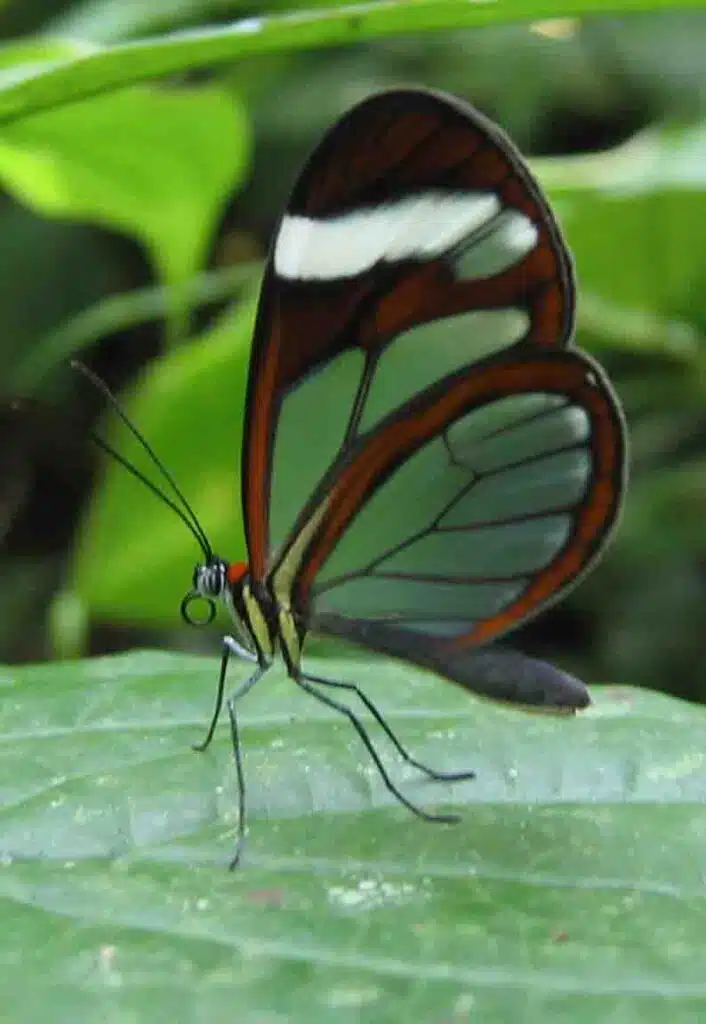
This type of butterfly is known for having clear wings with black veins and colorful margins.
Native to Central America, Thick-tipped Great butterflies occasionally make it into Southern US habitats as well.
They use the transparency of the wings for defense together with having bad taste.
Butterflies of this family get their bad taste by ingesting deadly nightshades as caterpillars.
- Andromica Clearwing (Greta andromica)
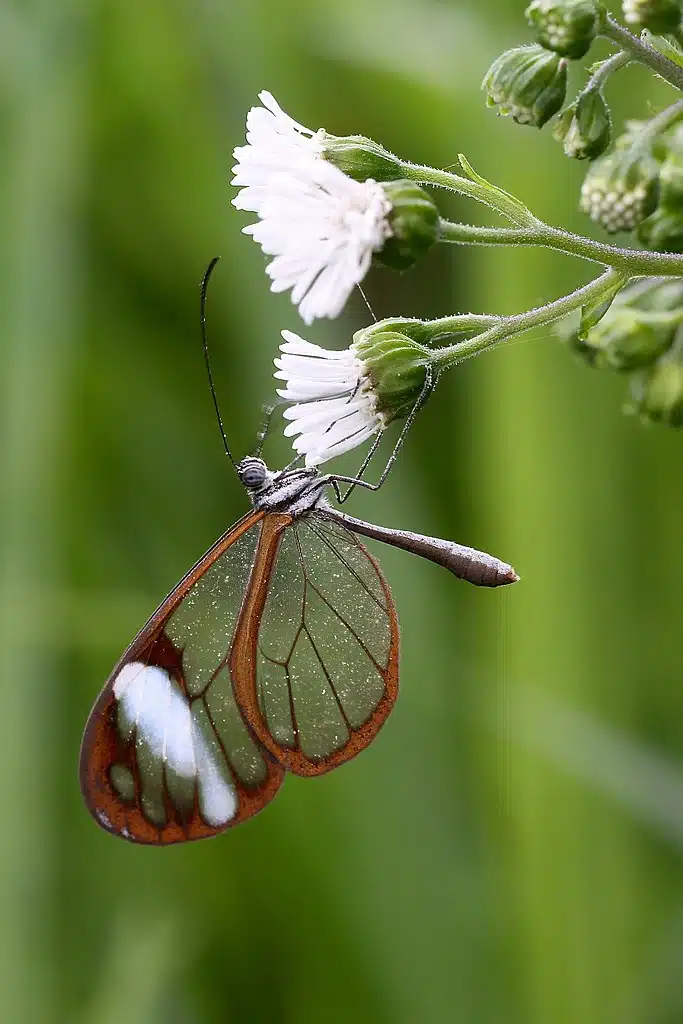
Native to Nicaragua, Andromica Clearwing is one of the rarest types of butterflies with clear wings in the world.
This species lives in woodlands and it’s known for having mostly clear wings.
Only the veins of the wings are orange, as are their margins. White spots are also seen towards the margins of its clear wings.
11. Dragonflies
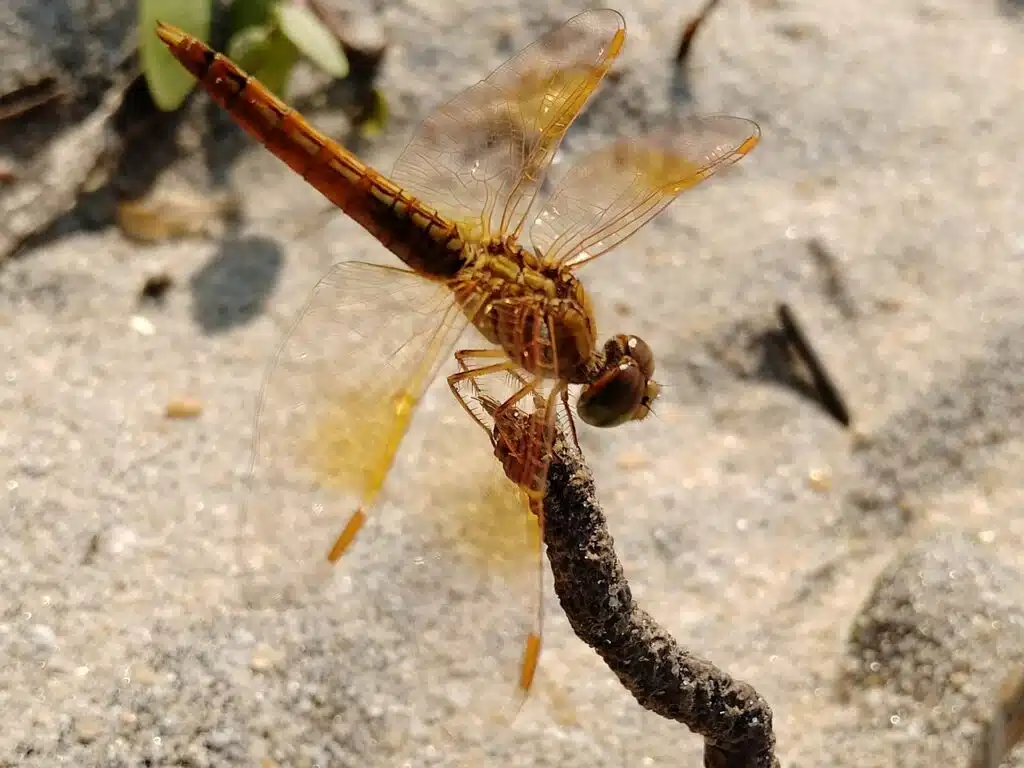
Dragonflies are some of the most unique bugs with clear wings. A long thin body and mostly transparent wings are specific to dragonflies.
These bugs are found near sources of water and they can sometimes be seen flying in tandem, while mating.
12. Damselflies
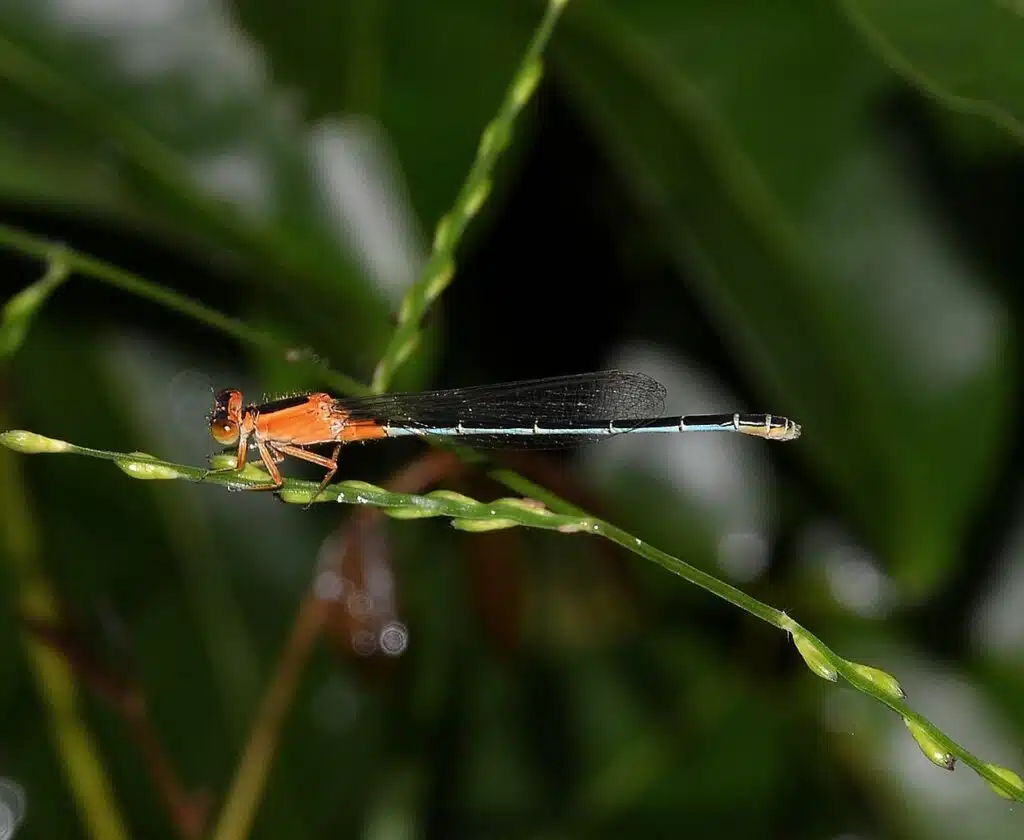
While not as common in all North American territories, damselflies also have clear wings.
The Common Bluetail (Ischnura senegalensis) is known for its blue and black body with transparent forewings and hindwings.
2 pairs of wings are seen on dragonflies, as opposed to one-pair flies around the house.
This species is also known for having females that mimic the colors of males. Both male and female Common Bluetails have transparent wings.
13. Antlions
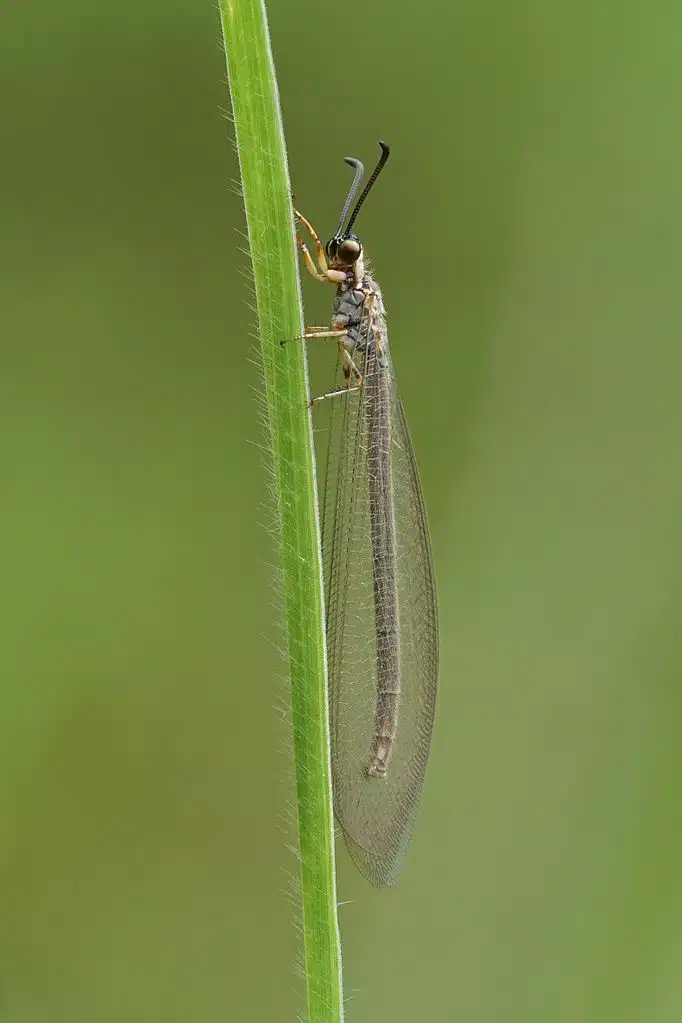
Antlions are some of the most atypical bugs with clear wings when it comes to both looks and feeding.
This is a species that resembles dragonflies as it has a slim long body, forewings, and hindwings.
Both the forewings and the hindwings of antlions are transparent.
Antlion larvae are known to dig in the ground to build traps for the ants they eat.
14. Mantidflies
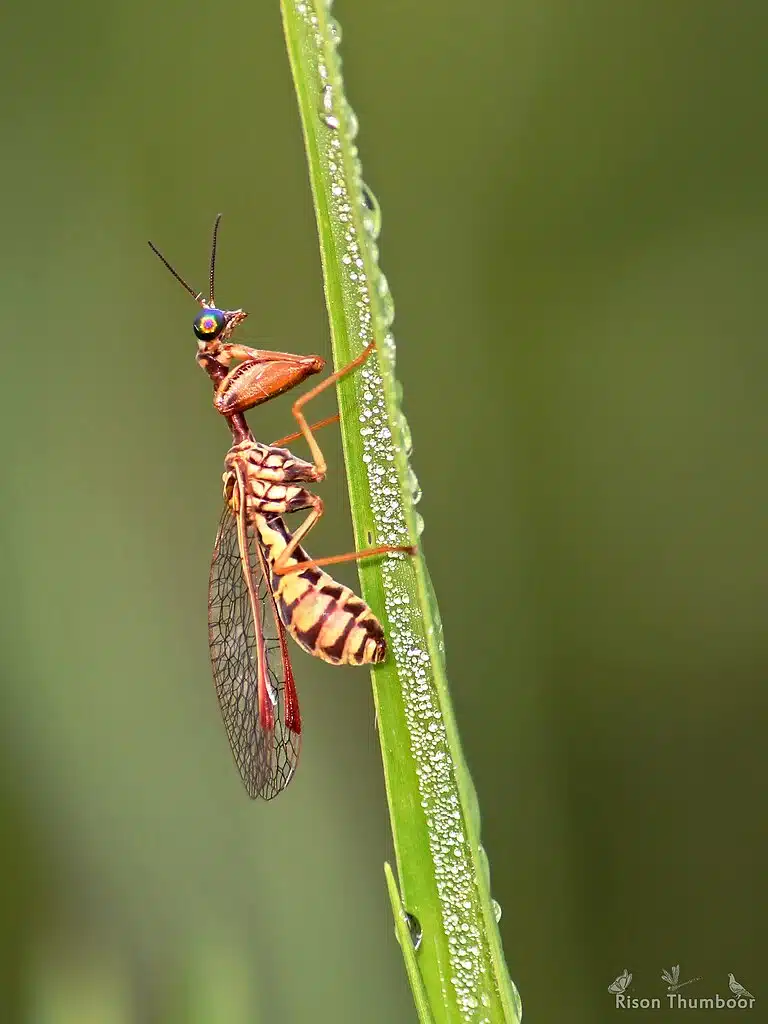
These flies have evolutionary traits such as raptorial front legs which are the result of evolution.
Claw-like front legs help mantidflies catch prey easily. These types of bugs are related to praying mantises both in looks and in feeding habits.
Hundreds of species of mantidflies live around the world, many of which are known for having clear wings.
15. Snakeflies
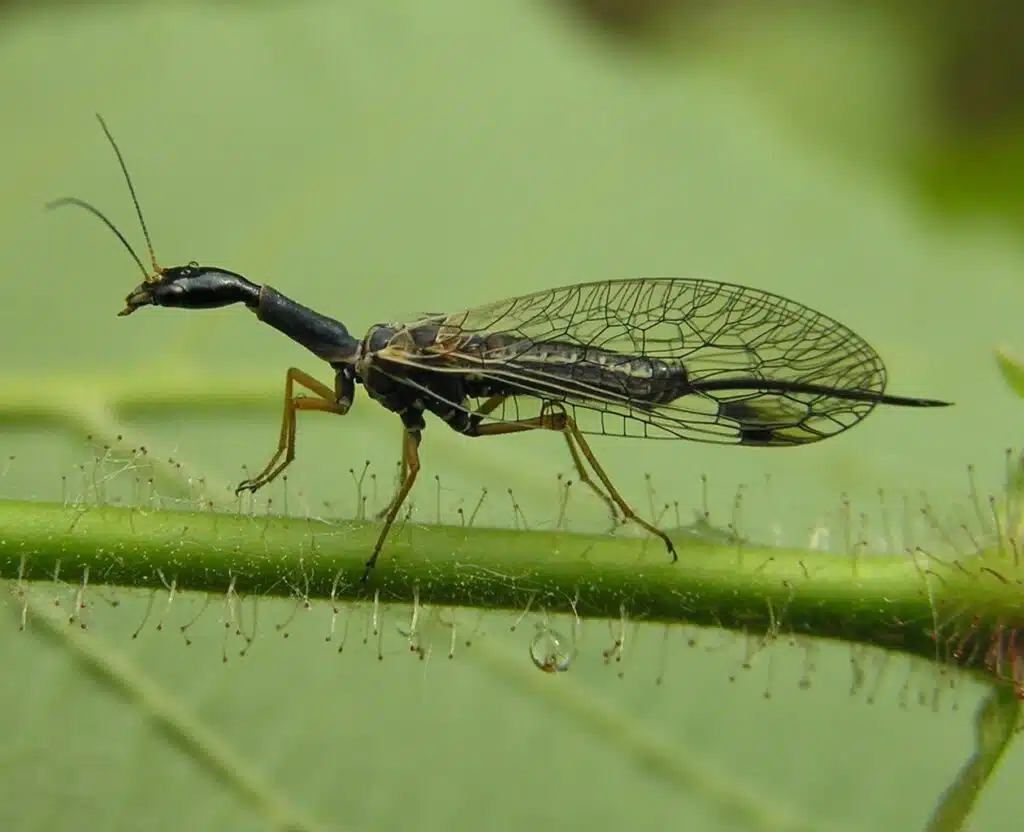
Snakeflies are another type of predatory species with transparent bugs. There are fewer worldwide snakefly species compared to mantidflies.
The species is most similar to lacewings. Longer antennae and a longer thorax are among the most visible differences when it comes to snakeflies.
Large wings with clear distinguishable veins are seen across the 260 species of snakeflies.